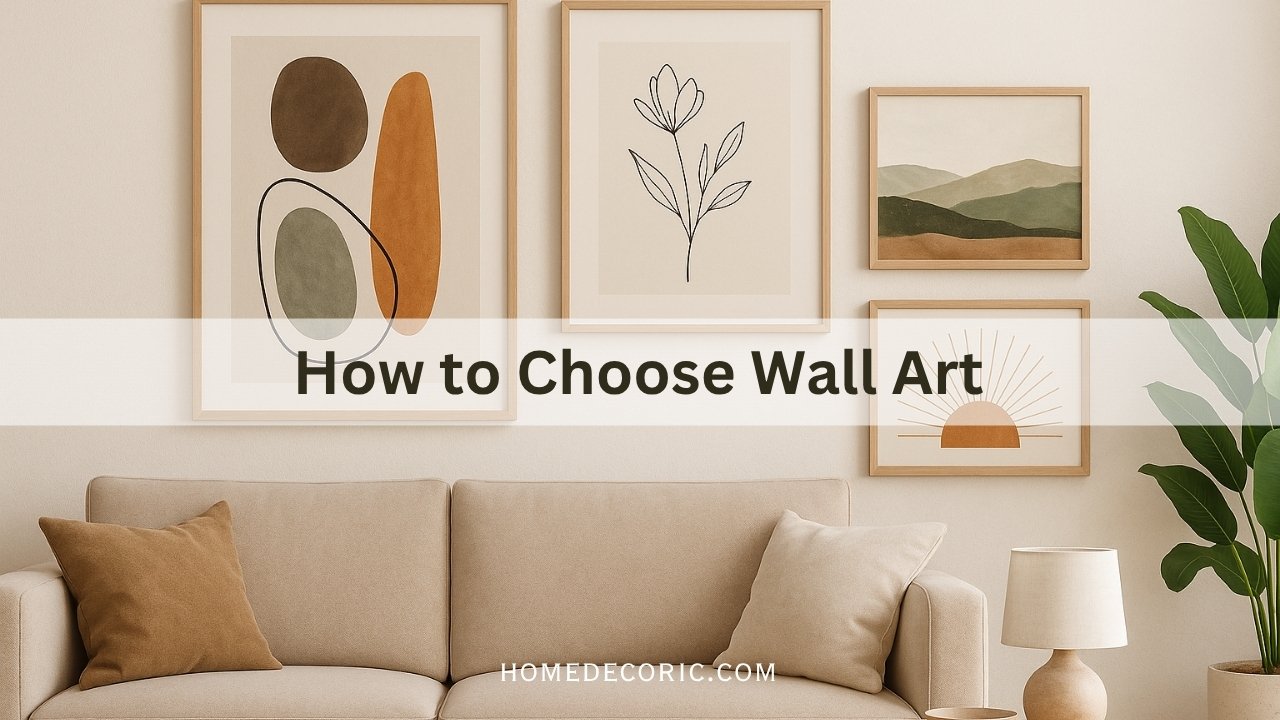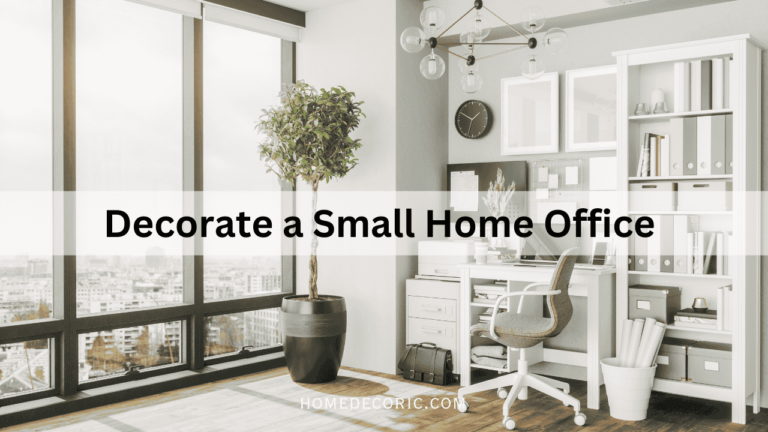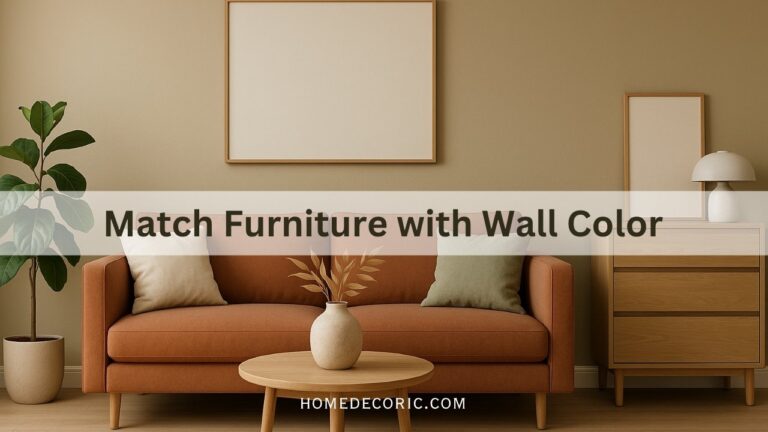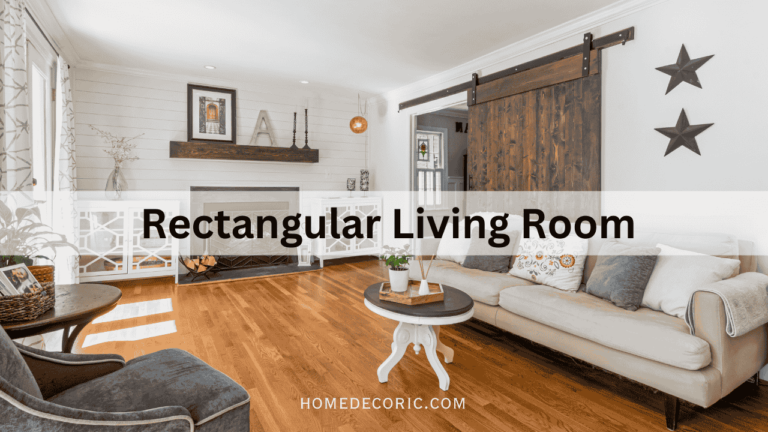Choosing the Right Wall Art for Every Room: A Comprehensive Guide
When considering how to choose wall art, it is essential to begin by assessing the unique characteristics of your room. Each space, whether it is a living room or a bedroom, possesses distinct dimensions and layouts that can significantly impact your selection of artwork. Start by measuring the wall space you wish to decorate; this will help determine the size and orientation of the pieces you can incorporate without overwhelming the area.

Understanding Your Space
The current decor in your room also plays a crucial role in guiding your choices. For example, incorporating complementary wall art can enhance the overall aesthetic in a living room filled with vibrant colors and bold furniture. Conversely, if your decor is more subdued, choosing artwork with a similar tone may create a more harmonious environment. Understanding how different art styles can either complement or clash with existing elements is critical in making educated choices.
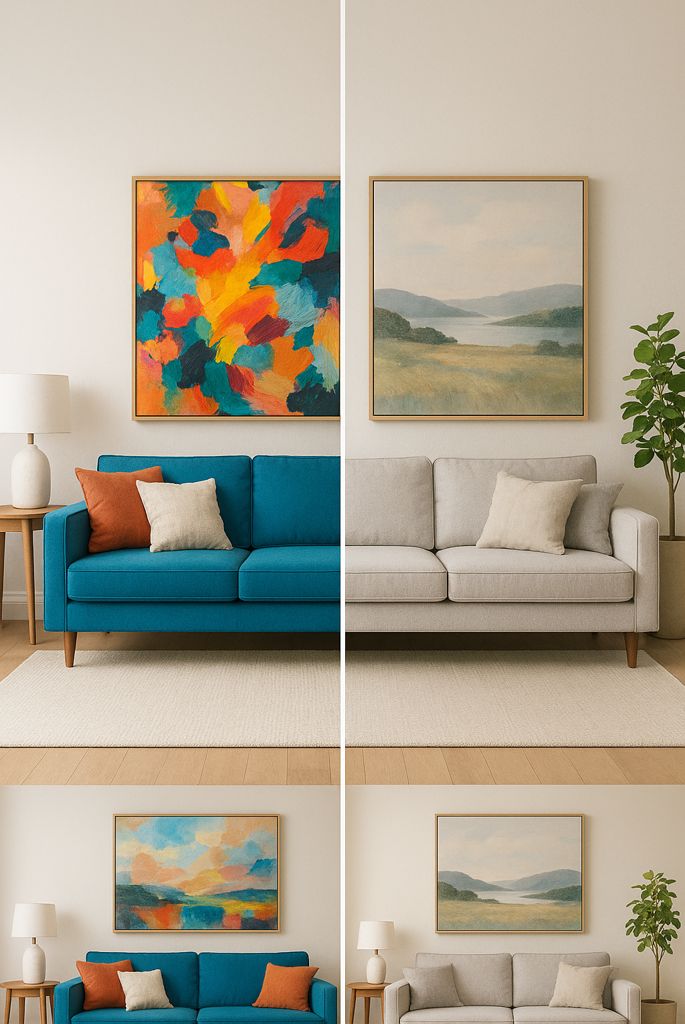
Wall Theme
Furthermore, consider the mood and theme you want to evoke in each room. The choice of wall art can significantly influence the ambiance; for instance, serene landscapes may be ideal for a bedroom, while dynamic abstract pieces could inject energy into a living room. Considering the emotional undertones associated with various art styles enables you to select items that align with your vision for the space.
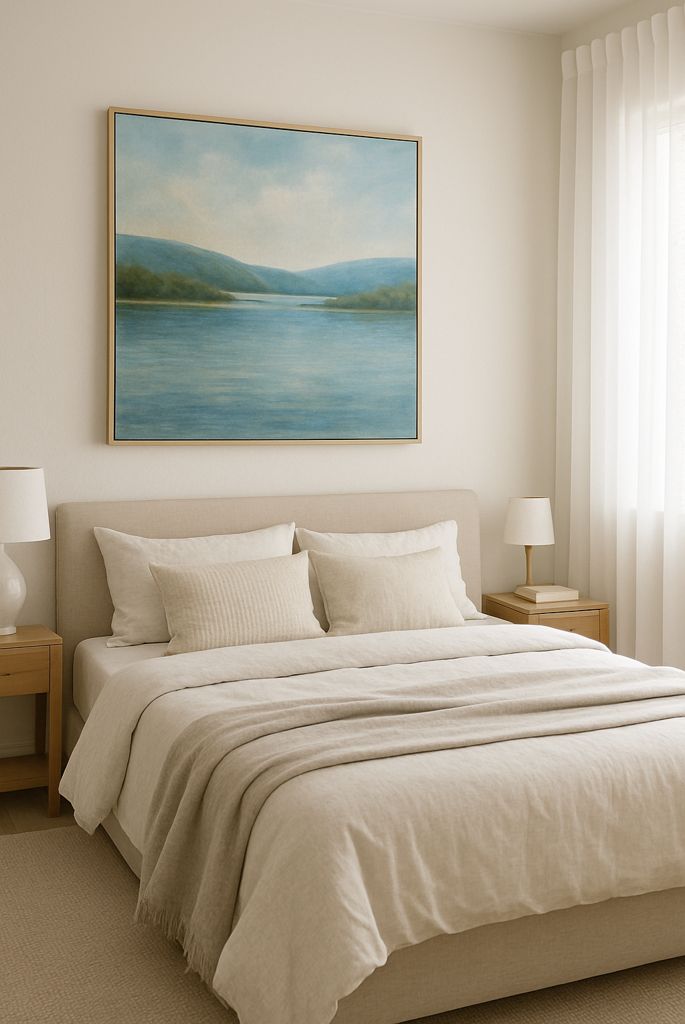
Large Piece Of Art On a Small Wall
Additionally, never underestimate the importance of scale. A large piece of art on a small wall could feel cramped, while a small print on an expansive wall may appear lost. Hence, when determining how to choose wall art for the living room and bedroom, ensure that the dimensions and proportions of the art complement the room’s scale and layout. This attention to detail will ensure that your wall art fits within the space and contributes positively to the overall decor.
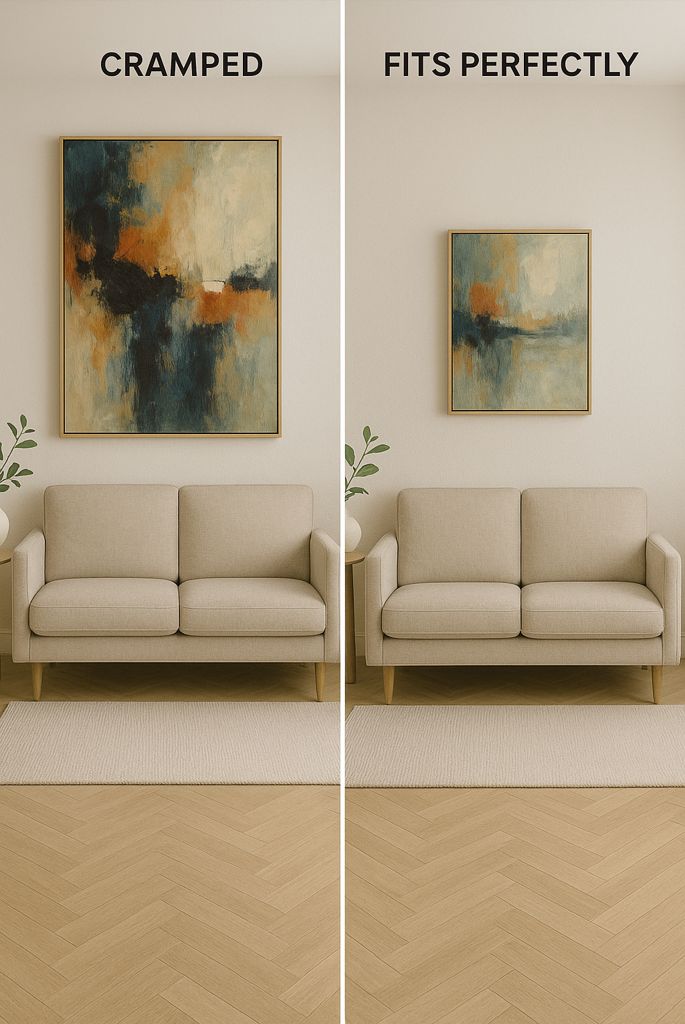
Types of Wall Art
Understanding the various types of wall art available is essential when choosing wall art. Each category offers unique characteristics that can enhance the overall ambiance and aesthetic of a space. Examples include paintings, prints, photographs, tapestries, and 3D installations. Let’s explore these categories in detail and how they can be applied in different settings.
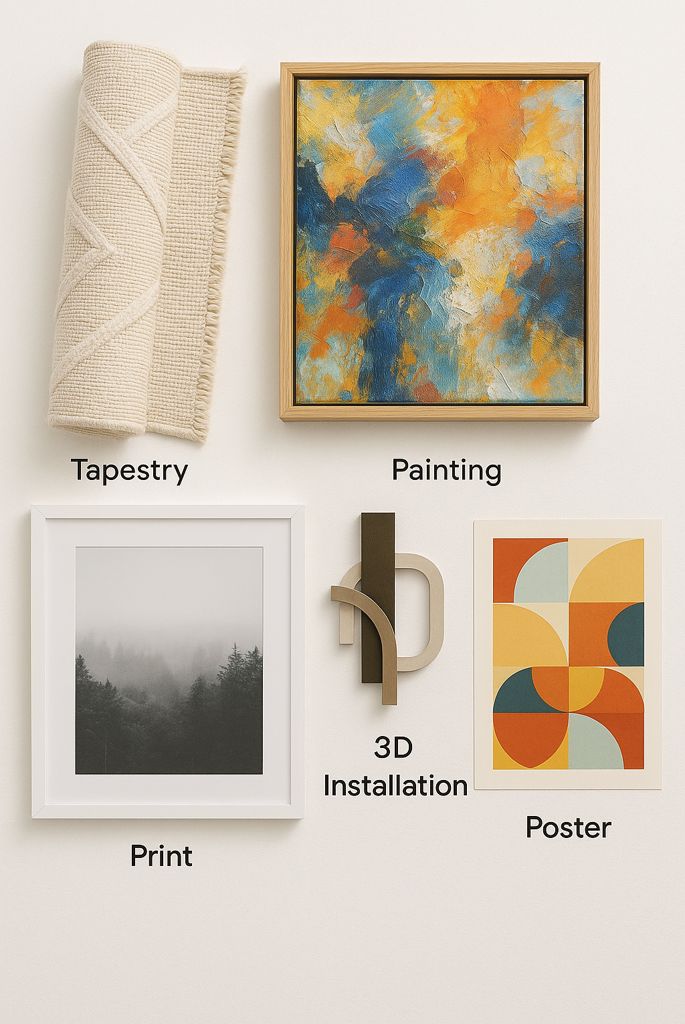
Classic Wall Art
Paintings are classic wall art, capturing emotion and creativity in a vivid display of colors and texture. They range from abstract concepts to realistic portraits, making them a versatile choice for living rooms where a statement piece could initiate conversation. When selecting a painting, it is crucial to consider the style of the room. Modern interpretations may suit contemporary spaces, while traditional artworks can enhance classic decor.
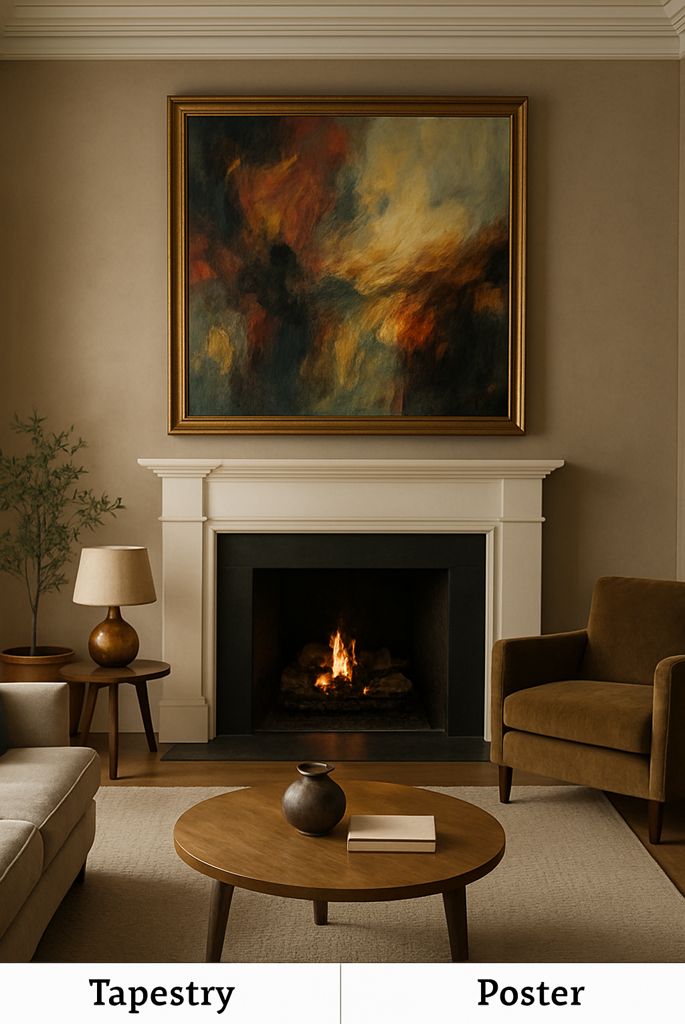
Prints in Bedrooms
Often more affordable, prints allow art enthusiasts to diversify their decor without overspending. They can feature anything from famous artworks to stunning photographs and illustrations. Opting for calming prints in bedrooms can create a serene environment, emphasizing tranquility and relaxation. When selecting prints, consider themes that resonate with your style or the mood you wish to establish.
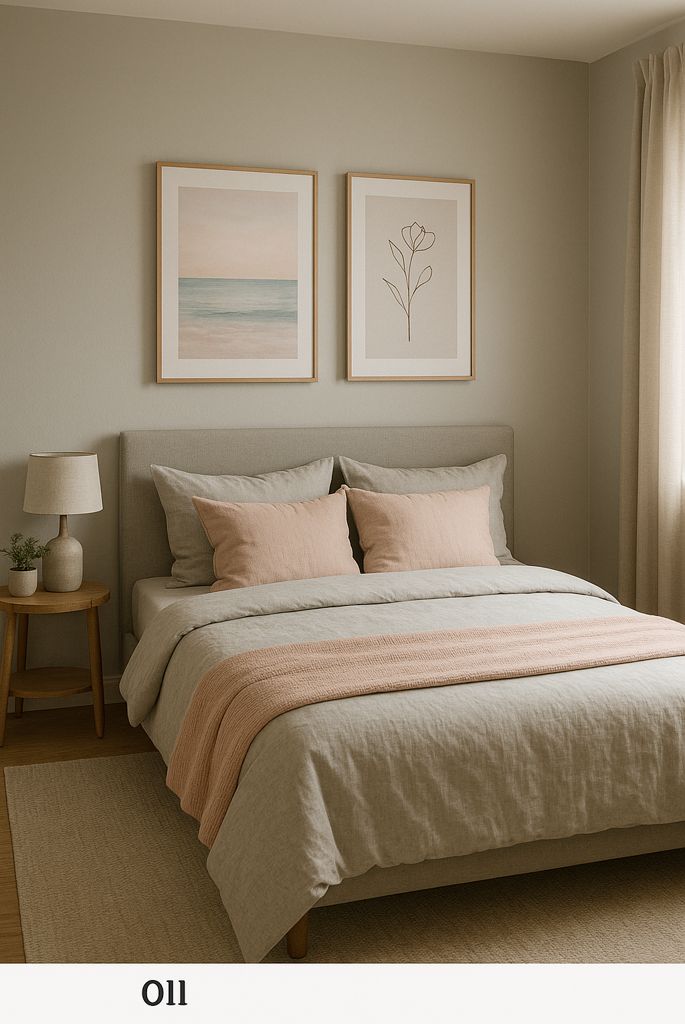
Personal Touch
Photographs encapsulate moments and invite a personal touch into your spaces. Family photos, travel snapshots, or artistic photography can all serve as excellent wall art. In kitchens or casual dining areas, a collage of food-related photography can add a vibrant and inviting feel. Meanwhile, tapestries bring texture and warmth; these fabric-based art pieces are well-suited for bedrooms or lounges where comfort is key.
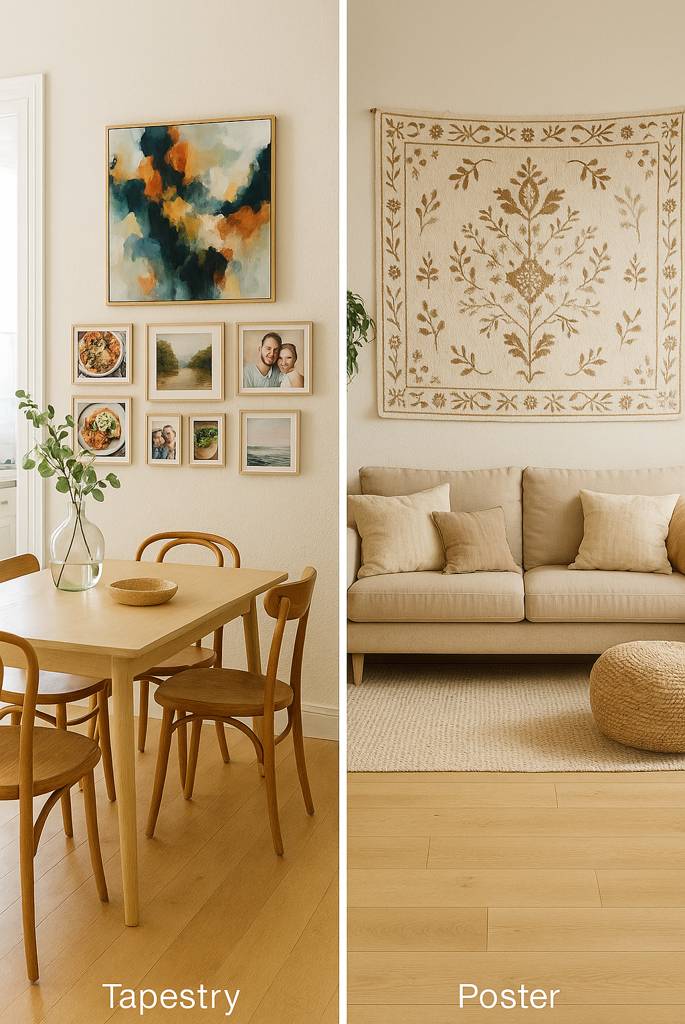
3D Installations
Finally, 3D installations, such as wall sculptures or mixed-media works, can elevate the complexity of your decor by introducing dimension. These types of wall art work excellently in creative spaces like home offices or galleries. When considering how to choose wall art, reflect on the kind that speaks to your aesthetic preferences while also aligning with the practical considerations of your room. Thoughtfully curating these elements creates a cohesive visual narrative throughout your home.
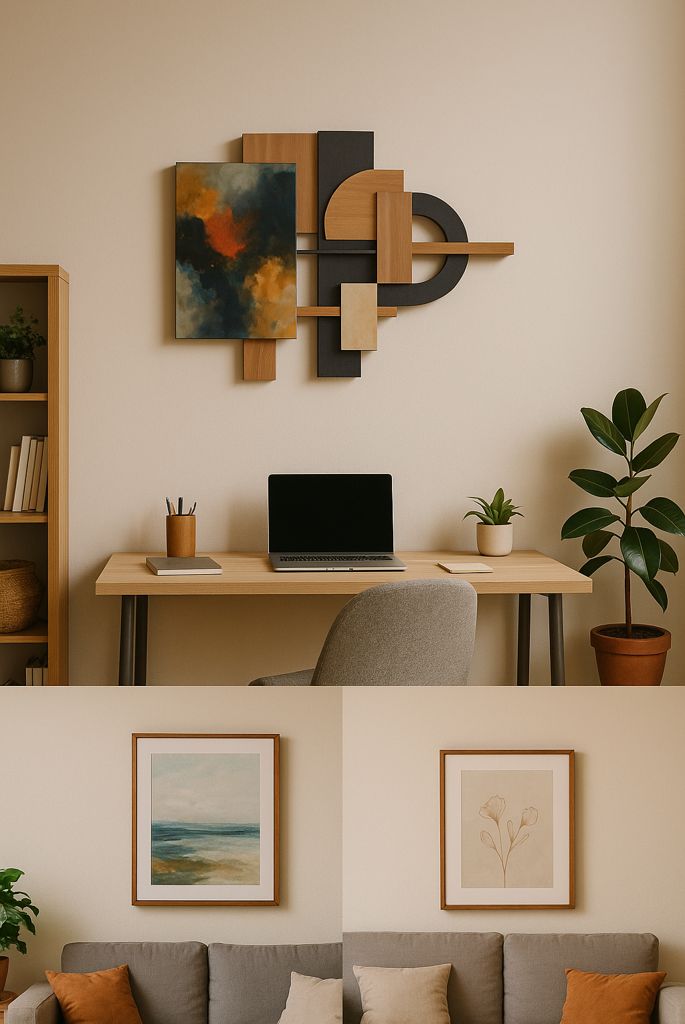
Color Palette and Themes
Choosing wall art that complements a room’s color palette and theme is essential for creating a harmonious atmosphere. Before making any decisions, it is imperative to assess the space’s existing colors and overall decor style.
The psychology of colors plays a significant role in art selection, as different hues can evoke varied emotional responses. For instance, warm tones such as reds and oranges can create a cozy and inviting feel, while cool colors, like blues and greens, tend to produce a calming effect.
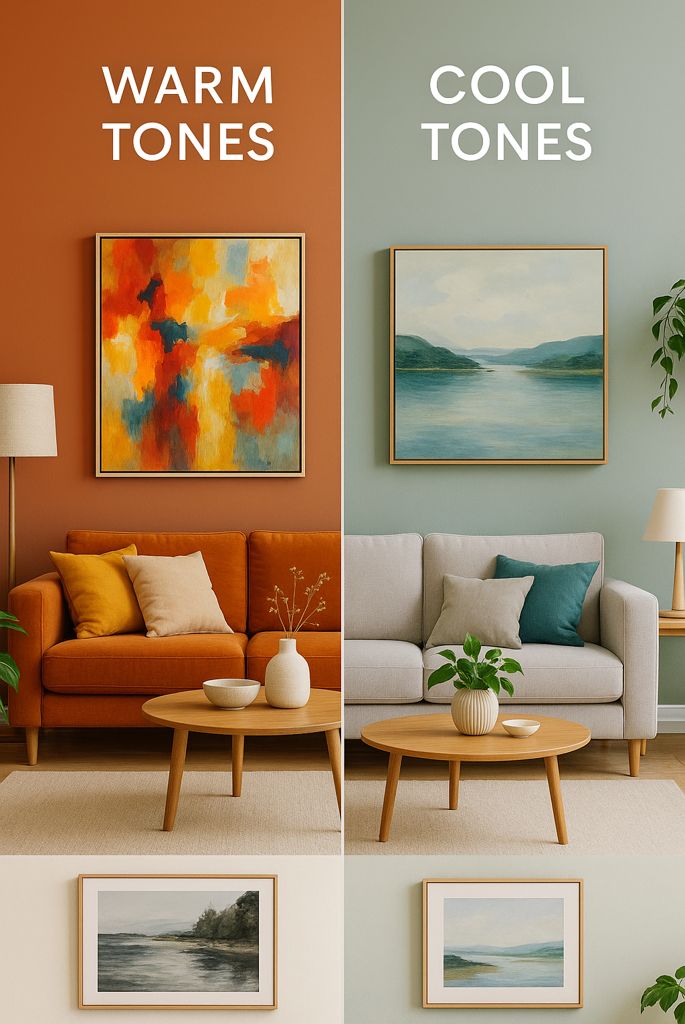
Primary Colors
To effectively select art pieces, identify the primary colors in your room and reflect on how they interact with potential artworks. Consider using a color wheel to find complementary colors, enhancing the visual appeal. For example, when choosing wall art for the living room, vibrant abstracts may energize the space, while subdued landscapes can create tranquility. It’s helpful to envision the ambiance you wish to achieve before deciding.
Matching Colors
Mixing and matching colors is an effective technique to create a cohesive look. However, balance is key; aim for a combination of artwork that harmonizes with the dominant tones of the room. Selecting wall art with lighter or brighter shades for darker rooms can uplift the overall mood.
Conversely, choosing pieces with deeper tones in brighter spaces can lend an element of sophistication. The best way to choose wall art in a bedroom often involves softer pastels or gentle textures to promote relaxation and serenity.
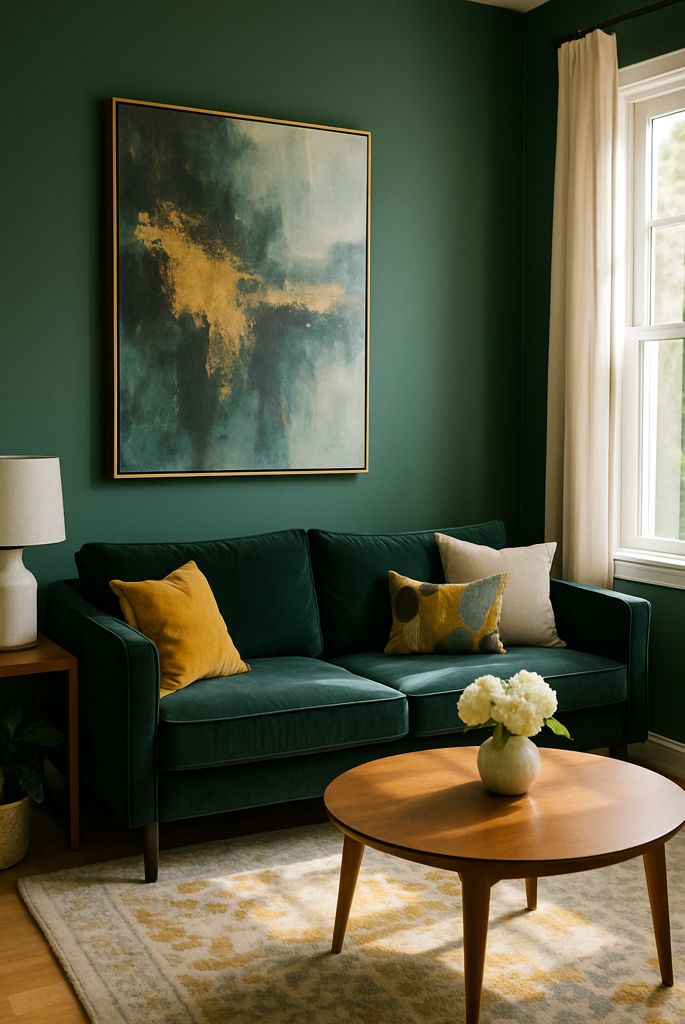
Ultimately, the selected artwork should enhance the room’s decor style, whether modern, rustic, minimalist, or eclectic. In conclusion, by thoughtfully considering your room’s color palette and themes, you can curate a collection of wall art that effectively enriches the space.
Hanging and Arranging Wall Art
When choosing wall art, the arrangement and hanging techniques are crucial in achieving a visually appealing effect. How wall art is positioned can significantly impact the overall ambiance of a room, whether it be a living room, bedroom, or any other space. One popular method is the gallery wall, which displays multiple pieces in a cohesive layout.
This technique allows for personal expression and can suit various styles, from eclectic to minimalist. When designing a gallery wall, it is essential to lay out the pieces on the floor first to determine the best arrangement before committing to any nails or screws.
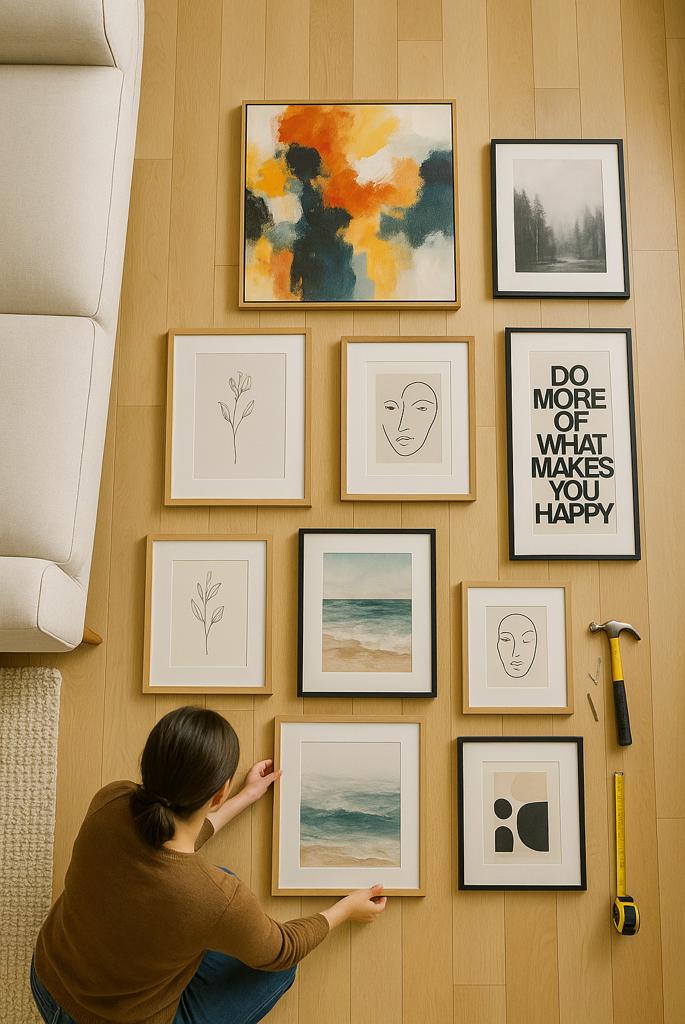
Gallery Walls
Grouping wall art can enhance a room’s visual dynamics, in addition to gallery walls. Aim for a mix of sizes and orientations to keep the design interesting when creating groupings. Generally, center the arrangement at eye level, roughly 57 to 60 inches from the floor, ensuring anyone can appreciate each piece. It is also essential to consider the spacing between each item; a distance of 2 to 4 inches works well in maintaining coherence without overcrowding.
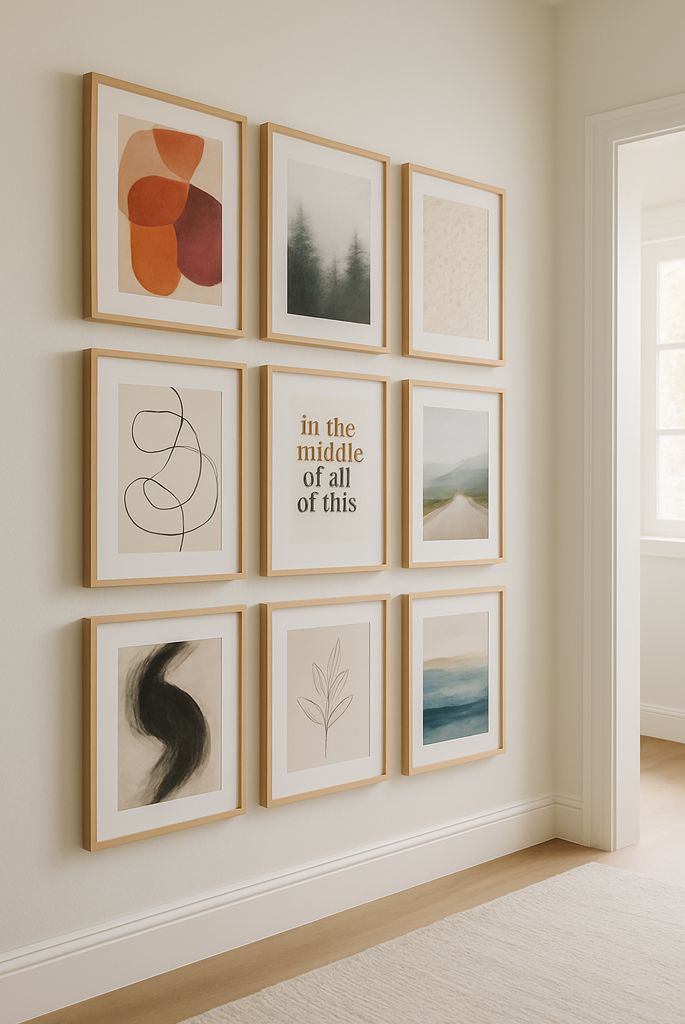
Decorative Frames
Another option is strategically placing solo wall art pieces, allowing them to serve as focal points in a room. When selecting the right height for hanging, the artwork’s center should align with the viewer’s eye level, adding to its visual prominence. Furthermore, frames, mats, and other display methods can enhance the overall effect.
Decorative frames complement the room’s color scheme and style, while mats can add depth. As tastes change over time, consider rearranging or rotating your wall art to keep the decor feeling fresh and engaging.
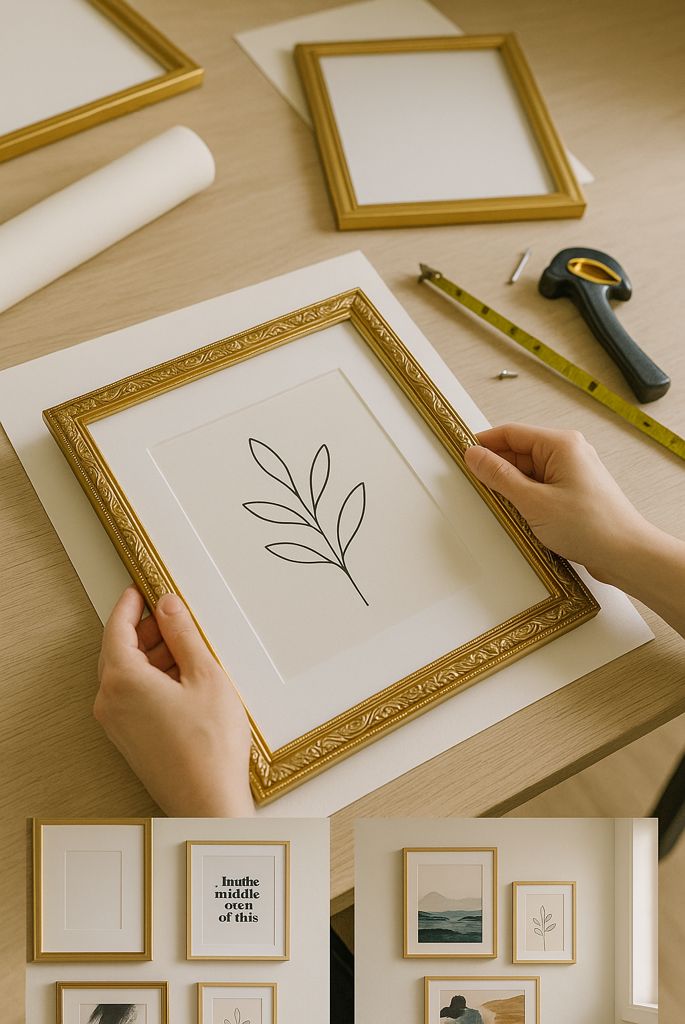
Conclusion
Mastering hanging and arranging wall art is essential for creating visually impactful spaces. For optimal results, consider various techniques, such as gallery walls and groupings, height, and spacing.
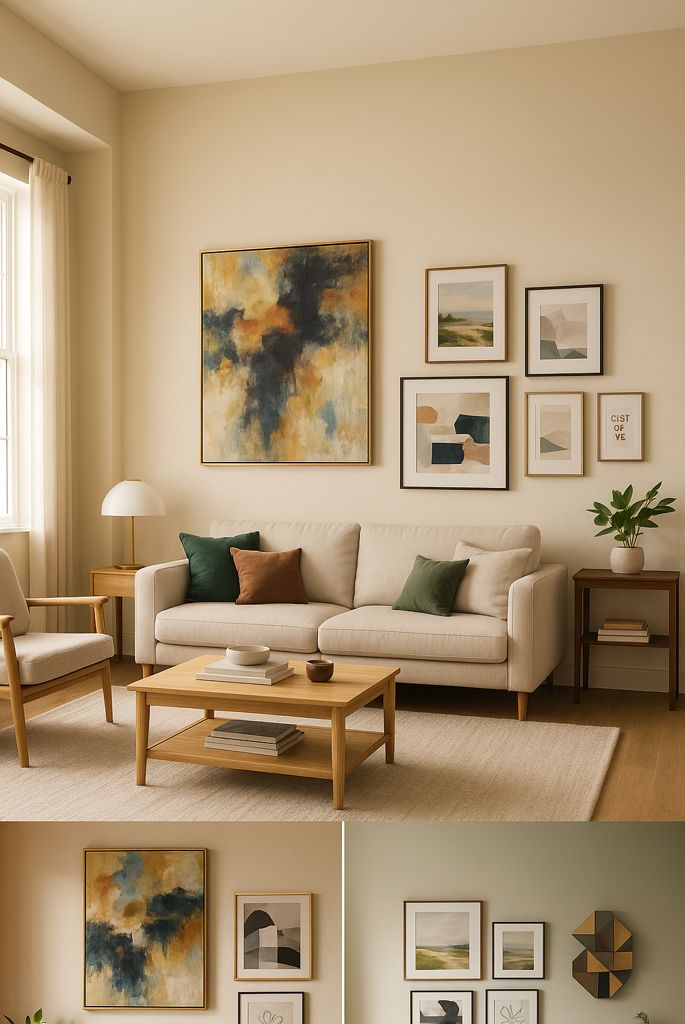
This will ensure that your selections resonate well within the intended room, enhancing its aesthetic appeal.

